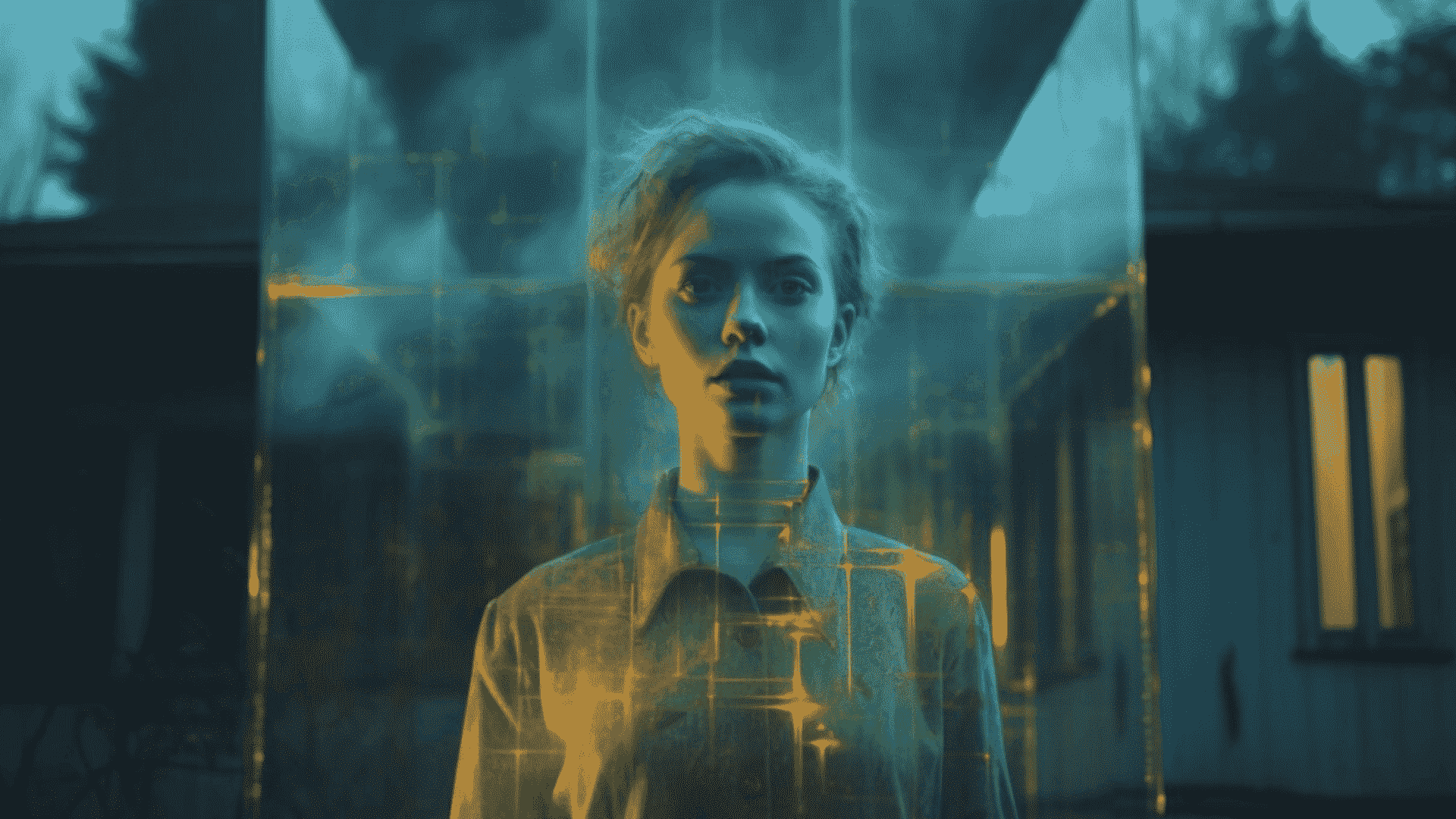AI image generator tools have grown exponentially in recent years, providing an innovative method of bringing your ideas to reality. These powerful tools let you create breathtaking, unique images based on the text you type in, which opens up a vast array of possibilities for designers, artists, and anyone with a spark of creativity.
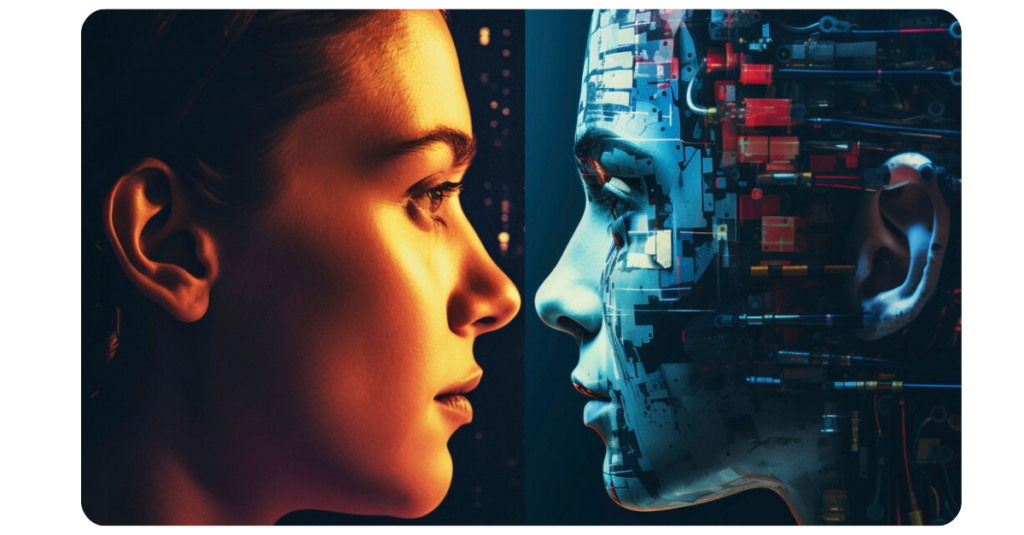
This complete guide will take you into the most potent AI image generators on the market currently and explore the strengths and weaknesses of each and its distinctive capabilities. We’ll also share practical tips and techniques to assist you in mastering this art of AI images, allowing your imagination and extending the boundaries of what’s feasible.
List of best 14 AI image generator tools
1. Picsart
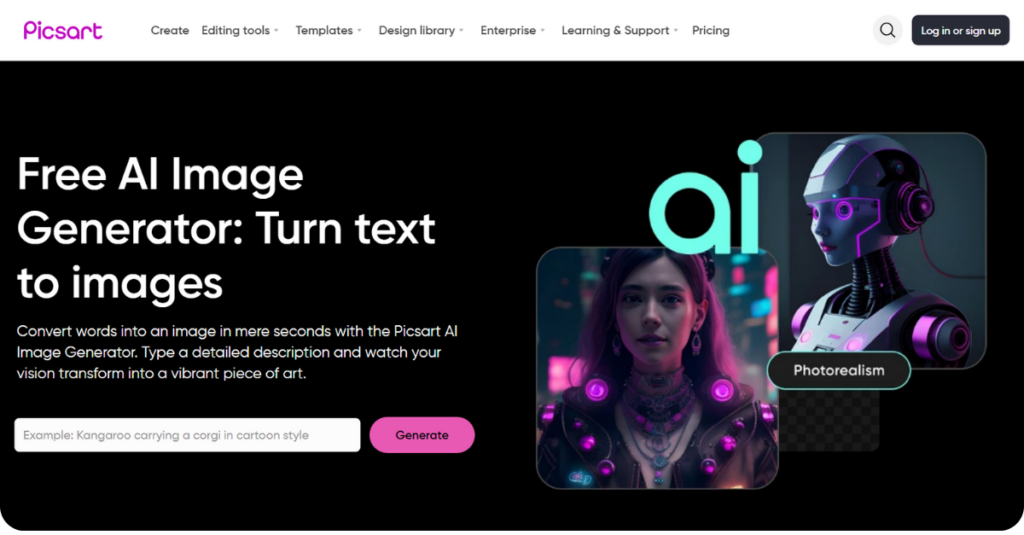
Picsart is a popular smartphone app used to design and edit photos. It also has the AI Image Generator you can use with your no-cost account.
Picturesart’s AI Image Generator has an intriguing feature that could be useful. If you’re having difficulty creating the correct prompt, you could use its prompt presets. These presets offer the perfect starting point for creating the ideal prompt, and you can even shuffle the prompt to build an entirely new prompt or alter its minor details to make the desired results.
Picsart offers more incredible tools worth investigating apart from this AI function.
Pros & Cons
Pros
- Easy-to-use
- High-quality results
- Expressive chips
Cons
- Need a Google account
- Strict guardrails can be limiting
2. Canva
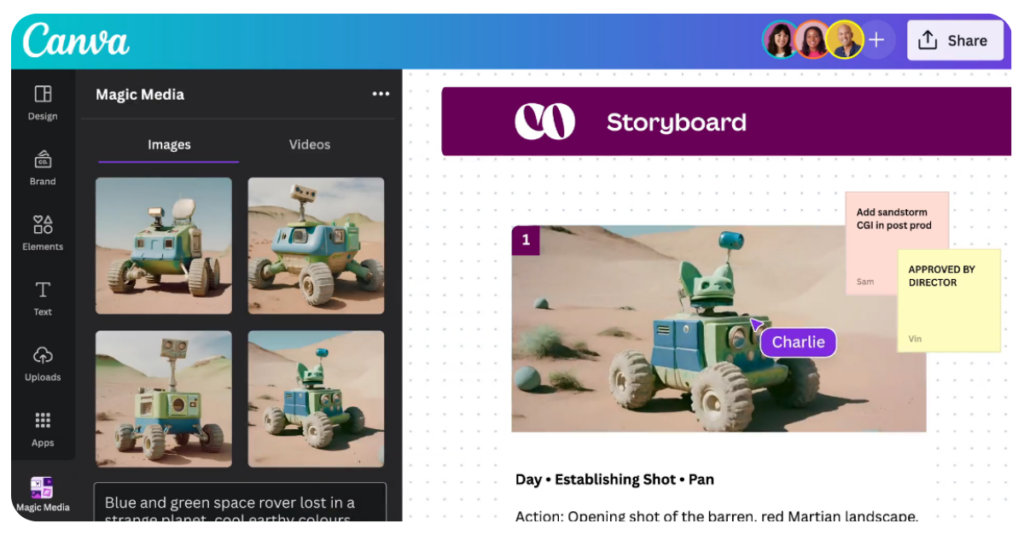
Canva is among the most well-known photo editing and design apps on the web and phones. Like Picsart, It has also entered the AI world by releasing a free AI art maker, simply known as Text to Image.
Text to Image may also provide prompts. However, it doesn’t have presets predefined as Picsart. Instead, select Try one example to create an unintentional prompt, then click Try another to generate a different one. Apart from that, you’ll get a selection of Styles to select from to ensure that the image you generate aligns with a specific theme.
The combination of this tool with other features that it provides will allow you to get the most value out the most out of Canva.
Pros & Cons
Pros
- It tailors templates to your specific needs.
- It’s an easy entry point into AI
- It speeds up the design process.
Cons
- It makes it easy to make bad design choices
3. Dezgo
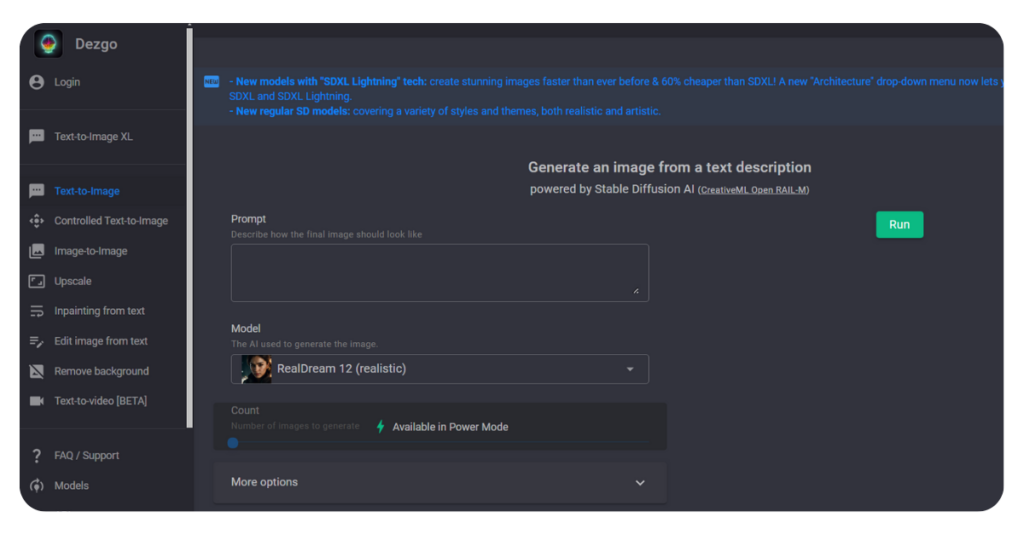
Dezgo is a different, effective AI Image Generator that can be amazed by its impressive results. It is similar to Nightcafe. However, its more advanced options could appear complex initially.
The free edition of Dezgo has some limitations, such as the number of images you can create at once and the possibility of adding additional processes (details) or upscaling the image.
If you’re not interested in going through its options, just enter your request and select an AI model you’d prefer to utilize to create your picture. Hit Run, and then let Dezgo work its magic!
Pros & Cons
Pros
- Fast
- Not copyrighted
- Accurate depictions
Cons
- Confusing credits
- No app
4. DALL-E 3
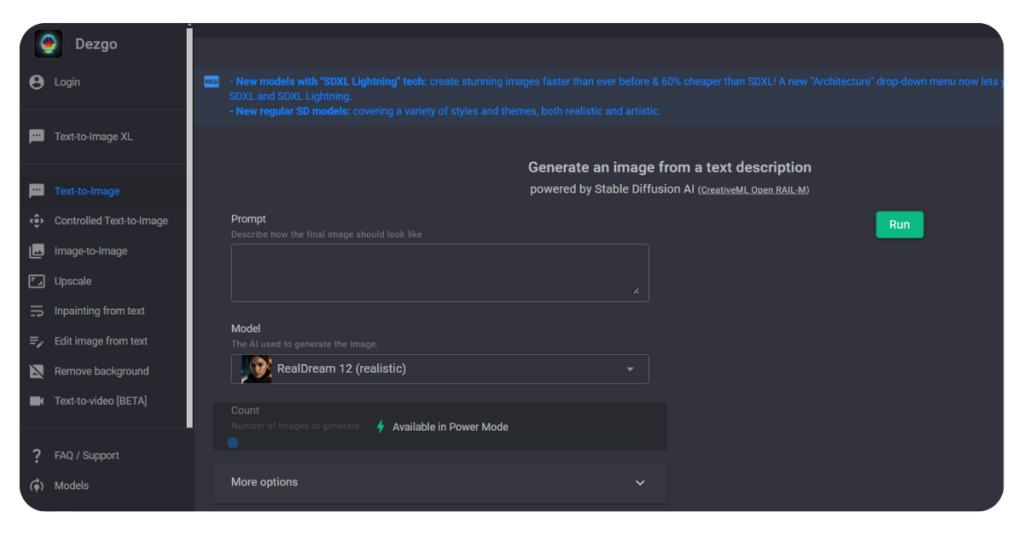
DALL*E3 3 is the newest version available from the OpenAI AI artwork generator. It’s a significant upgrade from DALL*E 2, both in the way it works and the quality of the images it produces. Again, it can be used against the different AI image generators on the market. Create AI images using any app that you have.
The most significant modification will be that DALL*E 3 is no longer an independent application, at least not now. It’s now integrated with ChatGPT. This makes it much easier to use. However, there are some glitches, as we’ve become accustomed to with any AI-powered application.
DALL*E 3 has two ways to modify images: either make an inquiry to ChatGPT to alter the image, and it’ll rerun the prompts incorporating your changes, and you can also utilize a select tool that will limit updates to specific areas within the photo.
Getting started with DALL·E 3
To access DALL*E 3, go to ChatGPT and select DALL*E in the sidebar. You can also click ChatGPT 3.5 in the middle of the screen and then, from the dropdown menu, choose GPT-4.
Then, using DALL*E 3 will be the same as ChatGPT’s. You can use a standard Text prompt or use it to communicate using natural languages. Using DALL*E through ChatGPT directly, every prompt will produce a single picture. If you choose DALL*E 3 from the sidebar, you’ll receive two images from which to select.
Strengths: Exceptional image quality, diverse styles, ability to generate complex scenes and concepts.
Weaknesses: Limited access (currently in closed beta), high cost for commercial use.
Pros & Cons
Pros
- Fast
- Not copyrighted
- Accurate depictions
Cons
- Confusing credits
- No app
5. Midjourney
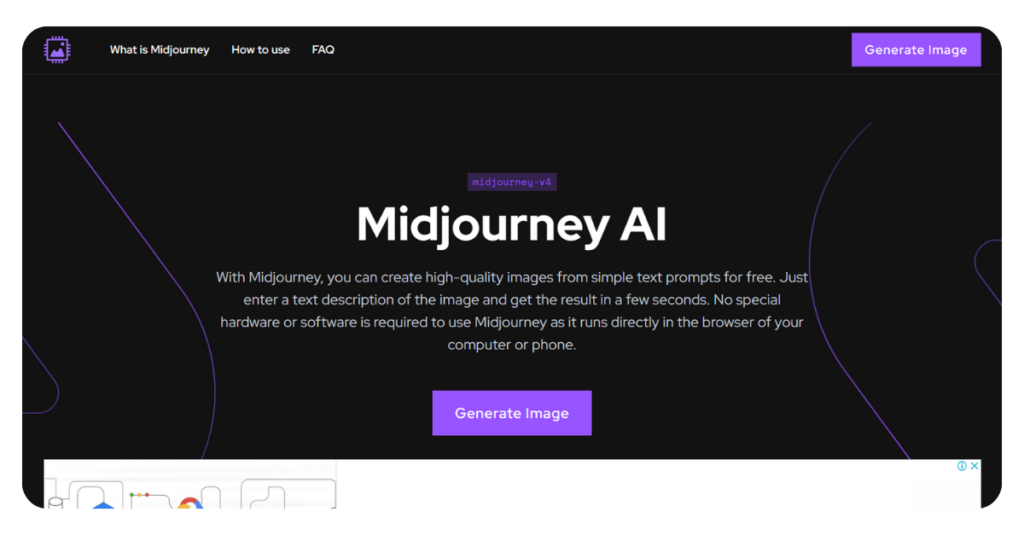
Midjourney is an original AI program created by a research lab headed by David Holz, co-founder of Leap Motion. This innovative tool transforms texts into stunning images. This feature has been popular with users since the open beta launched on July 12th, 2022. People from all fields are utilizing the potential of Midjourney to produce creative images by engaging with the AI with specific commands using a chatbot on the system, Discord. This combination of images and language opens new possibilities for digital imagination.
How to use Midjourney?
- Sign up for Discord.
- Join Midjourney and accept the invitation to join the Midjourney Discord channel.
- Go to the #newbies channel and use “subscribe” or “newbies.”
- Pick your Midjourney plan.
- Go back to Discord and then create images using the command /imagine.
- Edit and enhance your work.
- Save your photo.
Pros & Cons
Pros
- Very high-quality outputs
- No duds
- Discord community
Cons
- Monthly cost
- Confusing to set up
6. Stable Diffusion
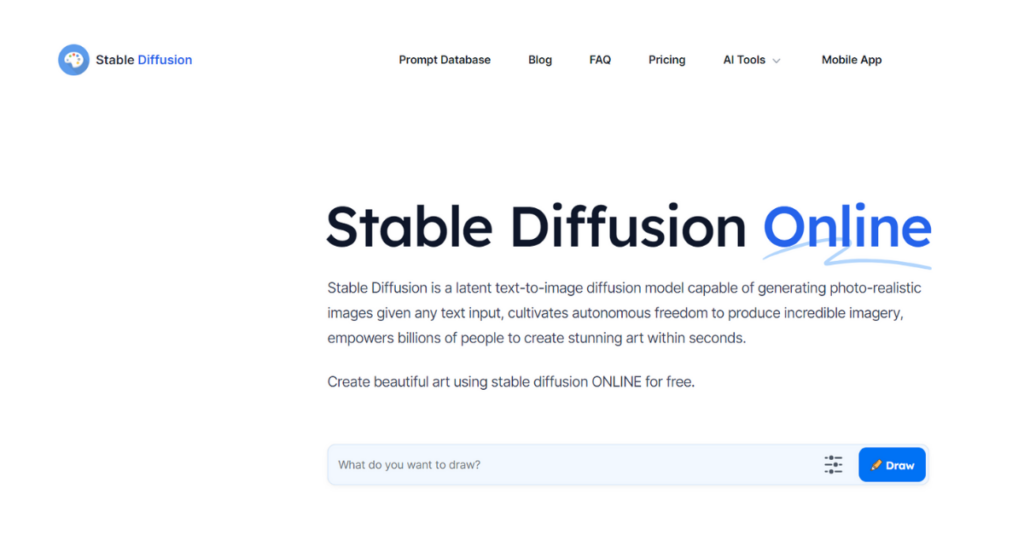
Stable diffusion is another highly versatile AI image generator. It’s free of charge, and you can create your models based on your data to produce precisely the type of images you’d like to see.
You can download it and use it on your computer. You can also create your model with LeapAI or something similar to NightCafe to connect to the API. The two most straightforward options, and the ones I’ll take you through here – are through Stability AI, the creators of the Stable Diffusion:
Clipdrop is a bit simpler and essentially free. However, DreamStudio provides greater freedom over what you’re trying to make. Both are user-friendly and are an excellent opportunity to experiment with stable Diffusion.
How to use Stable Diffusion with Clipdrop
- Head to Clipdrop and select Stable Diffusion XL.
- Enter a prompt, and click generate.
- Wait a few moments, and you’ll have these AI-generated options. The Style, Aspect Ratio, Negative Prompt
How to use Stable Diffusion with DreamStudio
- Go to https://dreamstudio.ai/generate.
- Stop any pop-ups that are promoting new features. You must also accept the conditions of use if it is requested.
- Click Login at the top right and create a brand new account.
Pros & Cons
Pros
- Fast
- Not copyrighted
- Accurate depictions
Cons
- Confusing credits
- No app
7. NightCafe
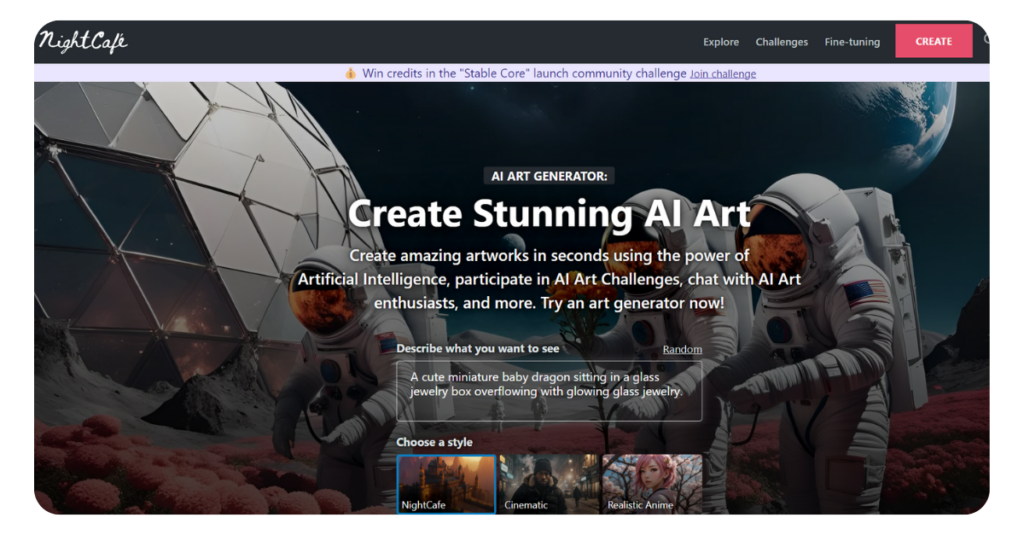
A user-friendly platform with various artistic styles and tools, NightCafe is perfect for beginners and casual users.
Strengths: Easy to use, affordable, and offers various artistic filters and effects.
Weaknesses: Limited control over image details and lower image resolution compared to other options.
Pros & Cons
Pros
- Very high-quality outputs
- No duds
- Discord community
Cons
- Monthly cost
- Confusing to set up
8. Deep Dream Generator

A unique AI image generator that uses deep learning algorithms to create dreamlike and surreal images. Strengths: Creates highly imaginative and psychedelic visuals and allows for real-time image editing.
Weaknesses: Less control over specific image elements can be computationally intensive.
Pros & Cons
Pros
- Fast
- Not copyrighted
- Accurate depictions
Cons
- Confusing credits
- No app
9. ImageFX by Google

Google’s ImageFX was a dark horse that entered the AI image generator field significantly later than the competition and more than a year after DALL-E 2 launched. However, the image generator’s performance has been worth the long wait. ImageFX can deliver high-quality, realistic outputs, including objects that are hard to render, like hands.
The tool boasts a unique feature, expressive chips, that make it easier to refine your prompts or generate new ones via dropdowns.
ImageFX also includes suggestions for the style you’d like your image rendered in, such as photorealistic, 35mm film, minimal, sketch, handmade, and more. This combination of features makes ImageFX the perfect for beginners who want to experiment.
Pros & Cons
Pros
- Easy-to-use
- High-quality results
- Expressive chips
Cons
- Need a Google account
- Strict guardrails can be limiting
10. Stability AI
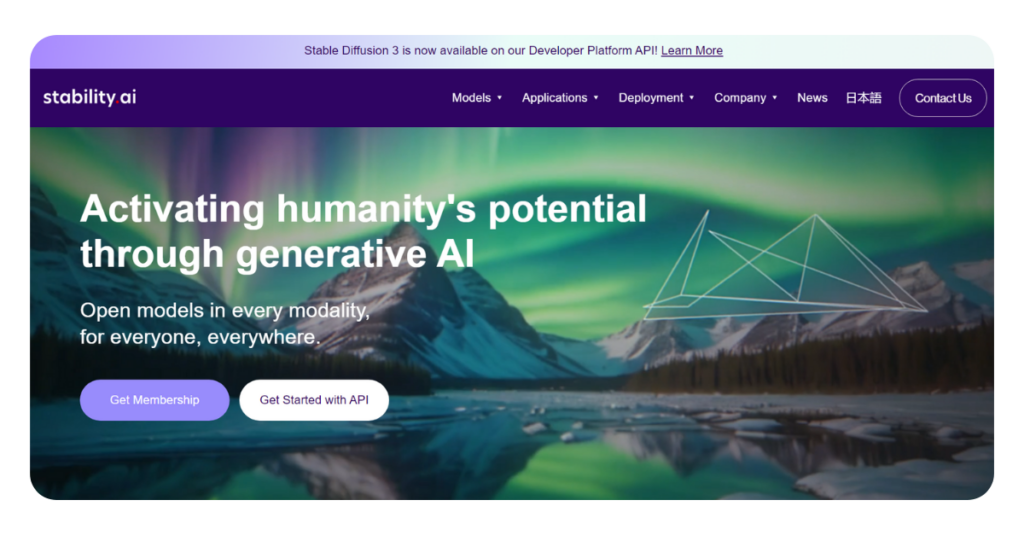
Stability AI developed the well-known, open-sourced, text-to-image generator Stable Diffusion. The tool is available for download, and you can utilize it at no cost. However, the use of this tool usually requires technical knowledge.
To make the technology available to everyone (regardless of level of proficiency), Stability AI created DreamStudio, which includes Stable Diffusion with a simple user interface to comprehend and use.
One of the best features of the software is its numerous options for personalization, including the “negative prompt,” where you can define the exact details of the things you’d prefer not to include when creating the image. It is also possible to alter the proportion of your images.
Pros & Cons:
Pros
- Accepts specific instruction
- Open source
- More entries for customization
Cons
- Paid credits
- Need to create an account
11. Dream by WOMBO
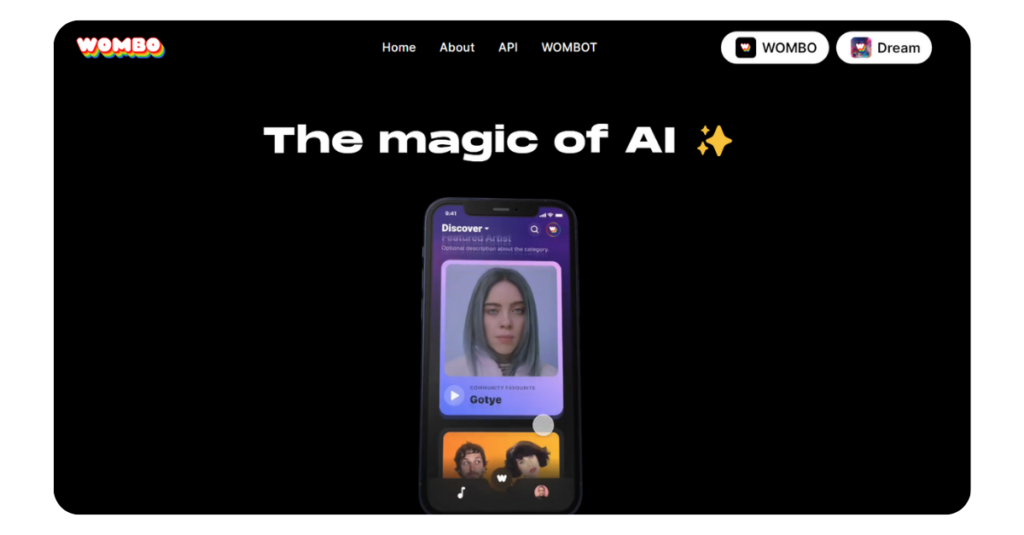
This app was awarded the first position for the top overall application in the Google Play 2022 awards. Additionally, it is rated five stars on Apple’s App Store and has 141.6K scores. You can design images and art using simple input prompts through the app.
Another benefit is that this AI image generator allows users to select various design styles, including realistic comic, expressionist, abstract fanatical, ink, and many more.
Alongside the app, it also offers a mobile desktop version that is easy to use. If you’re looking to elevate your experience with the application to a higher stage, you can spend the annual fee of $90 for a subscription of $10 / month.
Pros & Cons:
Pros
- Mobile app
- Remix your images
- Multiple templates
Cons
- One image per prompt
- Subscription cost for full access
12. Adobe Firefly
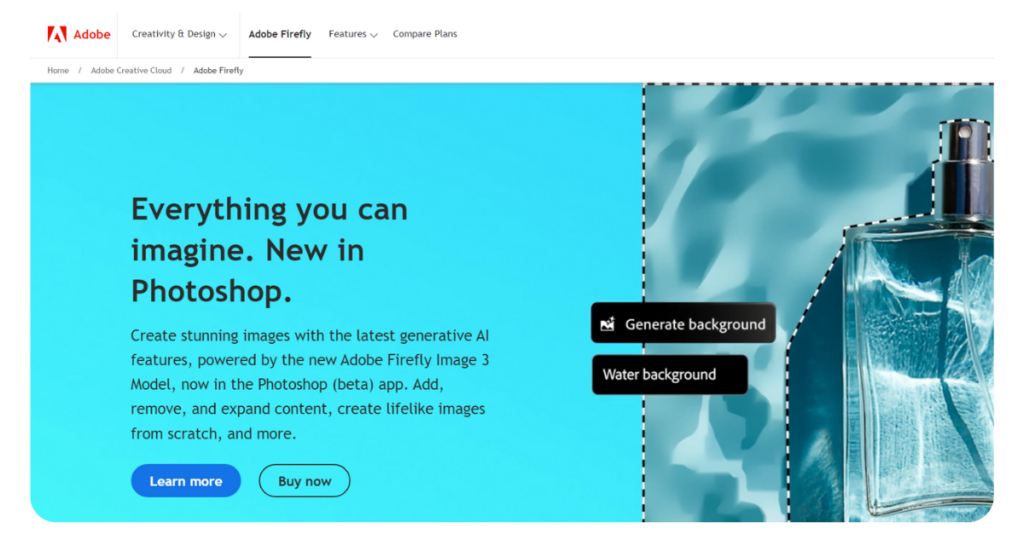
Adobe Firefly offers enterprise-friendly features and a high degree of polish. It provides a unique advantage:
- A user-friendly interface that is easy to use.
- A design-oriented collection of features.
- A vast, in-built public.
While Adobe’s choice to go live with Firefly was undoubtedly a significant moment in using generative AI, one question is its effectiveness.
I tried it out for a spin, and in this piece, I’ll show you the features that make Adobe Firefly different from other AI tools, show its strengths, and help you determine whether you’d prefer to use Firefly instead of a myriad of other art-making tools available.
Pros & Cons
Pros
- Structure and Style Reference
- Commercial-safe
- Free
Cons
- Longer lag than other generators
- More specific prompts are required
13. Generative AI by Fetty image
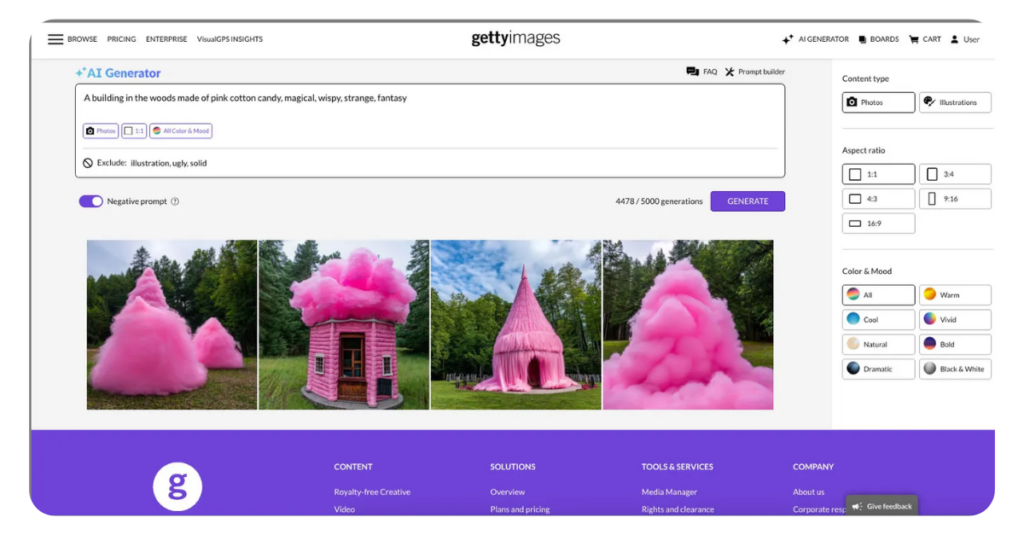
One of the most significant issues with AI image generators is that they typically train their generators on content from the entirety of the internet, which means the generators use aspects of creators’ art without compensation. This approach also puts businesses that use generators at risk of copyright infringement.
Generative AI by Getty Images tackles that issue by generating images with content solely from Getty Images’ vast creative library with full indemnification for commercial use. The generated images will have Getty Images’ standard royalty-free license, assuring customers that their content is fair to use without fearing legal repercussions.
Another pro is that contributors whose content was used to train the models will be compensated for their inclusion in the training set. This is an excellent solution for businesses that want stock photos that match their creative vision but want to avoid dealing with copyright-related issues.
Pros & Cons
Pros
- Commercially safe
- Contributor compensation program
- Personalized stock photos
Cons
- Not clear about pricing
- Not individual-friendly
14. Limewire
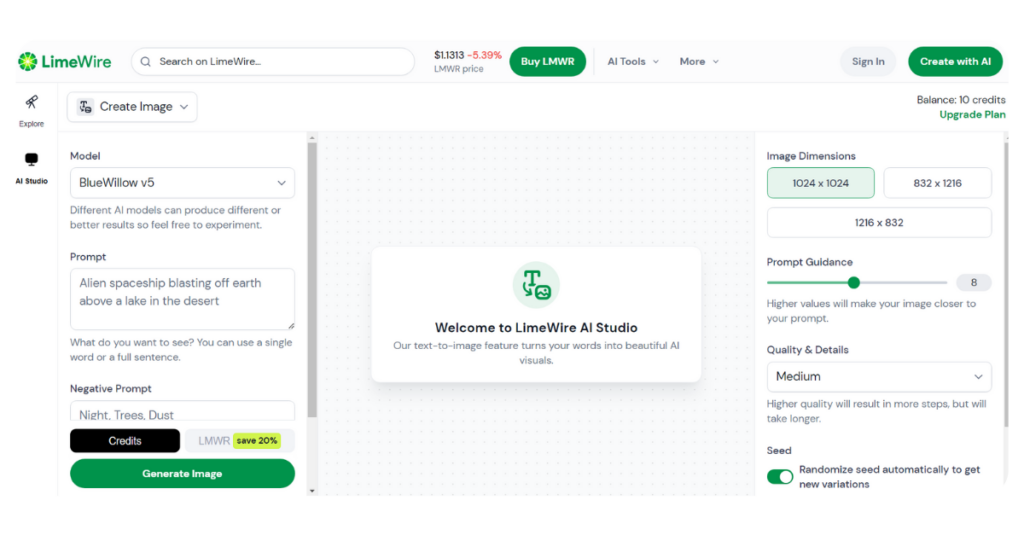
Limewire is a multi-functional AI creator tool that includes AI image generation editing, upscaling and outpainting features. Limewire’s AI image generator will create stunning images using its AI model. BlueWillow, Stable Diffusion XL, DALLE 3, Stable Diffusion 2.1, DALLE 2, and Google Imagen.
This is an excellent choice for creators, artists, marketers, and content creators with various creative needs. In addition to the AI creation of images, Limewire AI studio also comes with an AI audio generator and another AI video generator that’s still being developed.
Pros & Cons
Pros
- A free plan that gives you ten credits per day.
- Copyright ownership of the generated images.
- Supports BlueWillow, Stable Diffusion XL, Google Images, DALL E 2, and DALL E 3.
- Fresh and easy-to-navigate user interface.
- Image generation takes time for complex prompts.
Cons:
- Image generation takes time for complex prompts.
- Free credits cannot be used for “Pro” models.
Choosing the Right AI Image Generator
- Image quality: Do you need highly realistic images, and are you open to more abstract and artistic styles?
- Control and customization: How much power do you want over the generated image?
- Accessibility and cost: Is the AI image generator free or requires a subscription?
- Community and support: Does the platform have a strong community and support resources?
Tips and Tricks for Mastering AI Image Generation
- Use specific and detailed prompts: The more specific your prompt, the better the AI will understand your vision.
- Experiment with different styles and settings: Explore each platform’s options to find the style that best suits your needs.
- Use reference images: Provide the AI with reference images to guide the generation process.
- Iterate and refine: Don’t be afraid to experiment and refine your prompts until you achieve the desired result.
- Join the community: Learn from other users and share your creations to get feedback and inspiration.
Read Also: Best 23 Money Making Apps: A Quick Guide (2024)
Conclusion
AI image generators are a powerful tool for anyone who wants to explore their creativity and bring their ideas to life. By understanding the different options available and mastering the art of prompt engineering, you can unlock the full potential of these fantastic tools and create truly unique and stunning images.
FAQs:
1. What is an AI image generator?
An AI image generator uses AI to create images from user text inputs, usually within seconds. The photos vary in style depending on the software’s capabilities, but you can typically render an image in any style you want, including 3D, 2D, cinematic, modern, Renaissance, and more.
2. How do AI image generators work?
Like any other AI model, AI image generators work on learned data with which they are trained. Typically, these models are trained on billions of images, which they analyze for characteristics. The models then use these insights to create new images.
